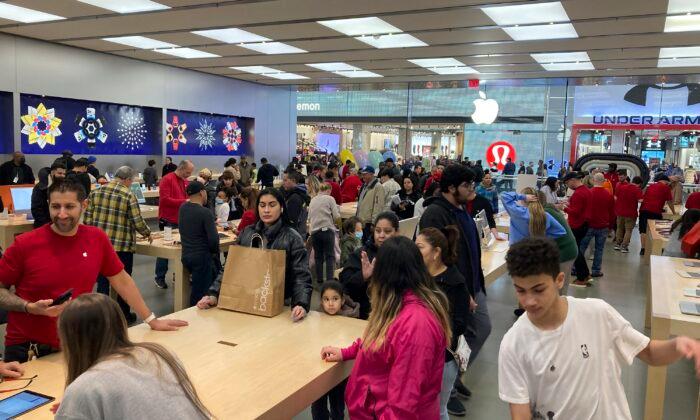U.S. retail sales pushed higher last month, as they beat forecasts in the face of inflationary pressures, but this may be due to one-time factors.
This tops the market’s forecast for a 1.9 percent increase in sales, which saw the largest jump since March 2021.
Consumer spending makes up about two-thirds of all U.S. economic activity, as almost every single sales category shot up for the first time since the pandemic last month. Excluding cars, sales rose 2.3 percent according to the report, which is not adjusted for inflation.
Retail sales in January rose 6.4 percent year over year, while the holiday sales season, which ran November through January, showed a 6.1 percent increase, the biggest surge in almost five years.
General retail sales showed a 4.5 percent increase since January 2022.
More Americans dined out last month, with the dining and hospitality sectors leading the increase in retail sales, at 25.2 percent year over year.
Meanwhile, the Consumer Price Index report on Feb. 13 showed U.S. inflation rose by 0.5 percent in January, led by housing and energy prices, according to the Department of Labor.
Housing prices continued to rise, jumping 7.9 percent year over year, while energy costs rose 8.7 percent.
Fed Policymakers Deliberate Next Move
The news comes as the Federal Reserve deliberating its next move, as price rises appear to be easing, but is still well ahead of its 2 percent annual inflation target.The Fed’s rate increases are focused on reducing demand to slow down the economy to lower inflation.
“I am confident that the gears of monetary policy will continue to move in a way that will bring inflation down to 2 percent. We will stay the course until our job is done,” said John Williams, president of the Federal Reserve Bank of New York.
Federal Reserve Chairman Jerome Powell, at an appearance at the Economic Club of Washington, offered a tough outlook on the future of the U.S. economy, explaining that 2023 is “going to be bumpy.”
However, White House Press Secretary Karine Jean-Pierre put a positive spin on the data, claiming that the Biden administration’s “economic plan is indeed working and it’s giving people a little breathing room.”
January Spending Boost May Be a One-Time Factor
Some analysts believe that the entire surge in January retail sales has more to do with one-time factors which are unlikely to repeat.According to Bank of America, it is possible that older households boosted spending over the holidays in anticipation of the 8.7 percent cost-of-living adjustment to Social Security benefits in January. The uptick in spending for older households may last into February.
Holiday spending has also become more front-loaded since the pandemic, which has altered spending patterns on a not seasonally adjusted basis, which may have led to the positive results last month.
Another reason for the pickup in January spending may be that consumers held back on spending in anticipation of large post-holiday clearance sales.
This falls in line with the fact that some of the weakest categories in December, such as furniture, clothing, and general merchandise, saw significant increases the following month.





